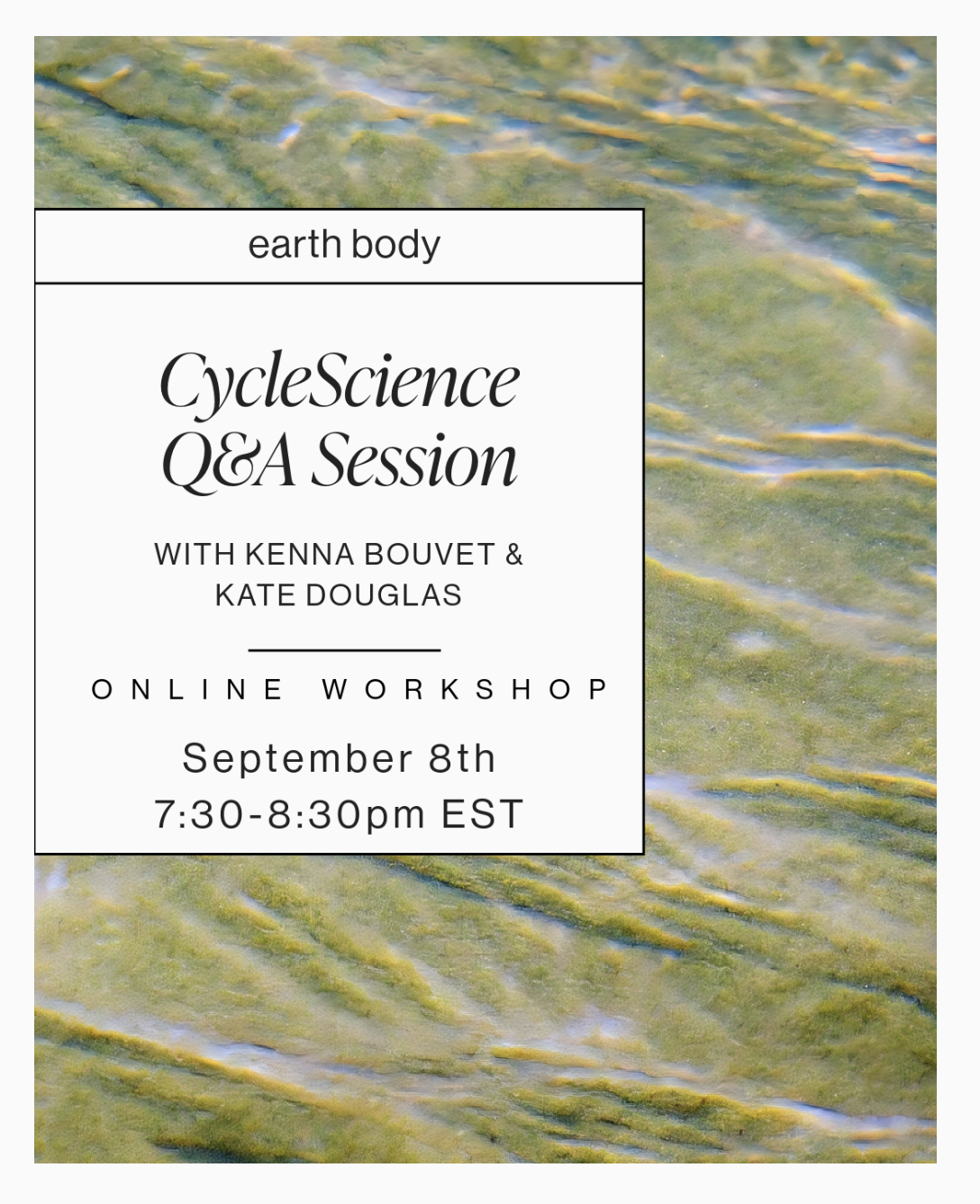TCM + Cycle Literacy
By: Kenna Bouvet, LAc
Traditional Chinese Medicine offers a profoundly beautiful framework for understanding the menstrual cycle—not only as a physiological process, but as something intimately connected to the rhythms of nature and the seasons of life.
While its language may at times feel metaphorical or abstract, it often reveals a deep and nuanced comprehension of the body’s inner workings.
Kenna in practice at Earth + Sky; photo by Lily Telford
Yin & Yang in the Cycle
The menstrual cycle, in Chinese Medicine, is an expression of the ebb and flow of Yin and Yang, orchestrating the body’s fertility through four interrelated phases: Blood, Yin, Yang, and Qi.
Blood/Menstruation: The cycle begins on Day 1 of menstruation, marked by a loss of blood and yin, initiated by a smooth discharge of Qi.
Yin/Follicular: After menstruation ends, the body shifts into the Yin phase, where blood and fluids—nourished by the Spleen and Stomach or digestion —rebuild to support follicular development and the uterine lining. Estrogen (viewed as yin in this scenario) dominates here, cooling, moistening, and nourishing the body in preparation for ovulation.
Yang/Ovulation: As Yin peaks, there is a seed of Yang budding. Ovulation marks a transition into the Yang phase, where the surge of LH (seen as more yang in this relationship) releases the egg and the body warms under the influence of progesterone. Yang’s active energy stabilizes and transforms the endometrial lining, preparing it for implantation.
Qi: If conception doesn’t occur, Yang declines, we move into the Qi phase, where warmth wanes and the uterine lining is shed. This process requires strong Qi movement to ensure smooth release and set the stage for a new cycle.
Throughout this rhythmic dance, organ systems like the Heart, Kidneys, Liver, and Spleen collaborate and extraordinary meridians take full power.
TCM + Cycle Literacy
Understanding the menstrual cycle through this lens fosters body literacy—recognizing how our energy shifts, when to rest, when to move, how to nourish ourselves, and how to observe our own patterns as part of a larger rhythm.
To fully understand what may be imbalanced—or remarkably aligned—there must be this cycle literacy.
For treatments to be truly effective, and for patients to advocate for themselves in both integrative and biomedical settings, we must bridge Chinese Medicine with the practical, observational tools offered by fertility awareness education.
It is through this integration that we empower patients with insight, clarity, and collaborative care.
Want to go deeper?
Kenna is teaming up with Earth Body to offer a free class this week!
-They’ll cover the cycle in clinical assessment, drawing on TCM as a resource.
-They’ll cover the foundations of cycle physiology and practical applications for integrating cycle literacy into your practice.



